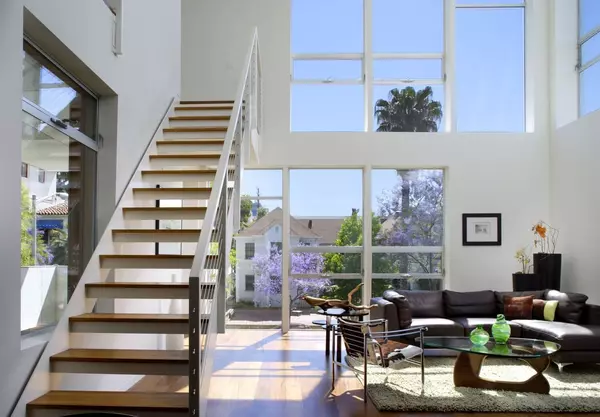Oregon Is Failing in Affordability and Homebuilding: Can Governor Kotek Turn the Tide?
Oregon’s housing crisis has deepened over the past decade, and the latest data confirms it’s among the nation’s toughest markets for affordability.
The Realtor.com® State-by-State Housing Report Card gave the Beaver State an F, underscoring its severe supply shortage and soaring costs. The report—part of the Let America Build campaign—grades every state on how well it balances current affordability with future construction potential.
And this is a national problem. In fact, President Donald Trump recently put pressure on homebuilders to increase construction nationwide, given the issues with construction in the country. In a post on his Truth Social platform in early October, he accused major builders of hoarding lots to prop up prices—likening them to OPEC, which restricts oil output to maintain high prices.
“They’re my friends ... but now, they can get Financing, and they have to start building Homes. They’re sitting on 2 Million empty lots, A RECORD,” Trump wrote. He urged Fannie Mae and Freddie Mac to intervene and “get Big Homebuilders going” to “restore the American Dream.”
Oregon’s results reveal a market where too few homes are being built and too many residents are being priced out.
Oregon’s “F” grade explained
Realtor.com’s analysis gave Oregon a total score of just 29.8, placing it near the bottom of the national rankings. The state’s median listing price was $563,896 in 2024, while the median household income reached $78,022—a gap that continues to widen each year. The Realtors Affordability Score stood at 0.46, indicating that only a small fraction of homes on the market are attainable for middle-income earners.
On the construction side, Oregon accounted for just 1.0% of national housing permits despite making up 1.3% of the U.S. population. That leaves it with a permit-to-population ratio of 0.77, showing that it’s underbuilding relative to its size. The state’s new construction premium—the price difference between new and existing homes—was just 2.0%, but that low figure reflects how costly both types of homes have become, rather than an abundance of affordable options.
Realtor.com economists point to a combination of high land costs, restrictive zoning, and environmental regulations as major obstacles to new construction. Without a sharp increase in housing production, Oregon’s affordability problem is likely to get worse before it gets better.
The West’s ongoing affordability crisis
Across the country, new construction has helped ease affordability in many regions, but the West remains the exception. The Realtor.com New Construction Insights report found that the median new-home price held at $450,797, while resale prices climbed 2.4%. That narrowed the national new construction premium to 7.8%, the lowest in the dataset’s history.
Yet the West saw the steepest decline in its share of new-construction listings, even as the total number of homes under construction increased. This mismatch reflects high costs, regulatory hurdles, and material shortages that make it harder to bring affordable inventory to market.
“New builds continue to become more available and more affordable to the American homebuyer despite subdued single-family construction trends,” said Realtor.com senior economist Joel Berner. “But in the West, elevated costs and zoning challenges have slowed progress, keeping affordability out of reach”.
In Oregon, that pattern is clear. Cities like Portland, Eugene, and Bend have seen demand surge while new housing lags. Even as population growth slows, affordability remains under intense pressure from years of underbuilding.
“America is short more than 4.7 million homes, and every new home built helps close that gap while fueling local economies," says Shannon McGahn, executive vice president and chief advocacy officer at the National Association of Realtors®.
"NAR research shows that the U.S. has faced a persistent housing shortage for more than a decade, driving up prices and limiting options for buyers. Expanding housing supply creates jobs, supports small businesses, and affords families the opportunity to build generational wealth.”
Governor Kotek’s housing push
In July 2025, Governor Tina Kotek signed five bipartisan bills aimed at addressing Oregon’s ongoing housing challenges and accelerating the construction of new homes across the state. House Bill 2138, House Bill 3031, House Bill 2258, Senate Bill 684, and House Bill 3145 each target specific barriers to development, with the broader goal of expanding housing supply and reducing costs.
“Families struggling with the high cost of living are forced to make impossible choices between staying in the communities they love or finding a place they can afford. This affordability crisis is the stubborn engine of our homelessness crisis,” Gov. Kotek said in a press release announcing the legislation. “Solving this decades-old problem demands creative, practical solutions to increase the supply of all kinds of homes as fast as we can. We have to cut red tape and get out of our own way. We have to invest in affordable housing projects. We have to help our cities and counties build the infrastructure they need to start building new homes.”
House Bill 2138 legalizes and accelerates the production of middle housing, expanding options for Oregonians and helping to reduce overall housing costs.
House Bill 2258 establishes a series of pre-approved building plans to streamline approvals and remove barriers to developing small apartments, single-unit dwellings, duplexes, townhomes, and other middle housing types.
House Bill 3031 creates the Housing Infrastructure Project Fund, designed to address infrastructure-related barriers through strategic investments. The fund will offer loans, forgivable loans, and grants to cities, counties, special districts, and federally recognized tribes to finance transportation, water, wastewater, stormwater, and site development projects tied directly to housing.
Senate Bill 684, introduced by Sen. Khan Pham, establishes the Construction Revolving Loan Fund, which will provide long-term financing for mixed-income residential housing.
House Bill 3145, introduced by Rep. Pam Marsh of Southern Jackson County, allocates $25 million in Local Innovation and Fast Track (LIFT) funds to support factory-produced housing. Modular homes, which can be built faster and at lower cost than traditional construction, are positioned as a key component in meeting the state’s urgent housing needs.
“Getting out of this housing hole requires us to re-examine our conventional ideas on so many fronts, including land use, permitting, design, and financing,” Rep. Marsh said. “The use of factory-based components that can get homes on the ground more quickly and, perhaps, more inexpensively, needs to be a pillar in our state’s housing strategy. House Bill 3145 provides Oregon developers, builders, factory operators, and communities the chance to test new approaches that could help break through barriers to housing production.”
This article was produced with editorial input from Dina Sartore-Bodo and Gabriella Iannetta.
Categories
Recent Posts










GET MORE INFORMATION

Stevan Stanisic
Real Estate Advisor | License ID: SL3518131
Real Estate Advisor License ID: SL3518131
